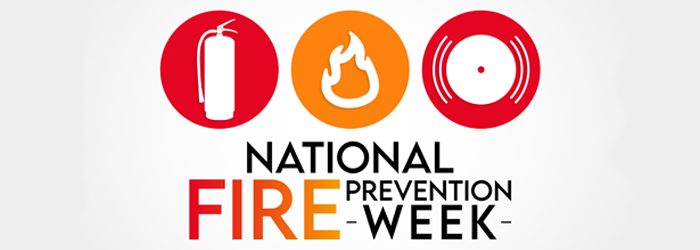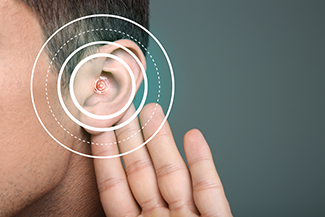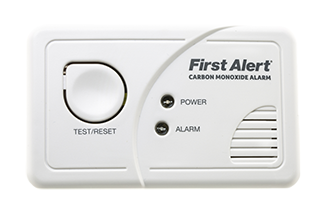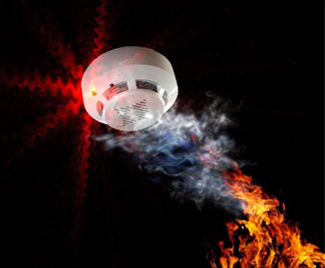Using All of Our Senses to Detect and Prevent Fire
 28 September 2021
28 September 2021 

Using All of Our Senses to Detect and Prevent Fire | Fire Prevention Week 2021
Fire Prevention Week is observed each year during the week of October 9th in commemoration of the Great Chicago Fire, which began on October 8, 1871, and ended on the 10th. According to National Geographic, the fire caused damage over four miles long and one mile wide. The fire destroyed 17,500 buildings and 73 miles of street. Ninety thousand people—one in three Chicago residents—were left homeless by the fire. It is estimated that 300 people died in the blaze.
Since 1922, the NFPA (National Fire Prevention Association) has sponsored the public observance of Fire Prevention Week. In 1925, President Calvin Coolidge proclaimed Fire Prevention Week a national observance, making it the longest-running public health observance in our country. During Fire Prevention Week, children, adults, and teachers learn how to stay safe in case of a fire. Firefighters provide lifesaving public education to decrease casualties caused by fires.
The 2021 Campaign

This year’s FPW campaign, “Learn the Sounds of Fire Safety!” works to educate everyone about the different sounds the smoke and carbon monoxide alarms make. Knowing what to do when an alarm sounds will keep you and your family safe. When an alarm makes noises – a beeping sound or a chirping sound – you must take action. Carefully
The NFPA offers the following information.
For the Hearing Impaired
There are smoke alarms and alert devices that alert people who are deaf or hard of hearing. These devices include strobe lights that flash to alert people when the smoke alarm sounds. Pillow or bed shakers designed to work with your smoke alarm also can be purchased and installed. These work by shaking the pillow or bed when the smoke alarm sounds. These products can be found online and in stores that sell smoke and CO alarms.
Choose smoke alarms and accessories designed for the hearing impaired and are tested by a qualified testing laboratory. Sleep with your mobile phone and your hearing aids or implants close to your bed.
Make sure your smoke and CO alarms meet the needs of all your family members, including those with sensory or physical disabilities.
Some tips:
- Install a bedside alert device that responds to the sound of the smoke and CO alarms. The use of a low-frequency alarm can also wake a sleeping person with mild to severe hearing loss.
- Sleep with your mobility equipment (cane, walker) medical devices (medical alert), glasses, and phone close to your bed.
- Keep pathways like hallways lit with night lights and free from clutter.
Smoke & Carbon Monoxide (CO) Alarms
The difference between smoke alarms and carbon monoxide (CO) alarms.

Smoke alarms sense smoke well before you can, alerting you to danger. In the event of a fire, you may have as little as two minutes to escape safely. Therefore, smoke alarms need to be in every bedroom, hallway, and on each level of the home. Do not put smoke alarms in your kitchen or bathrooms.
Carbon monoxide is an odorless, colorless gas that displaces oxygen in your body and brain and can render you unconscious before you even realize something is happening to you. Without vital oxygen, you are at risk of death from carbon monoxide poisoning in a short time. CO alarms detect the presence of carbon monoxide and alert you so you can get out immediately, call 9-1-1, and let the professionals check your home.
How to select the right alarms for your home.
 Choose an alarm that is listed with a testing laboratory and has met its standards for protection. Select a unit that requires yearly changing of batteries, or a 10-year unit that you change out at the end of the 10 years. Either will provide protection.
Choose an alarm that is listed with a testing laboratory and has met its standards for protection. Select a unit that requires yearly changing of batteries, or a 10-year unit that you change out at the end of the 10 years. Either will provide protection.
Select CO alarms that also have a battery backup, like this one from First Alert. Choose one that is listed with a testing laboratory. For the best protection, use combination smoke and carbon monoxide alarms that are interconnected throughout the home. These can be installed by a qualified electrician so that when one sounds, they all sound. This ensures you can hear the alarm no matter where in your home the alarm originates.
For the Visually Impaired
Although this year's focus is the sounds of fire, it is important to include tips for the visually impaired. Frank Vance, Director of Rehabilitation Services, The Arizona Center for the Blind and Visually Impaired offers these tips:
- Be sure the person is aware of organizations like The Arizona Center for the Blind and Visually Impaired that teach visually impaired people skills that keep them safe from accidental fires.

- Label flammable products in an adaptive manner and any information or knowledge that is needed is accessible based on guidelines by service organizations for the visually impaired. It is vital products are used properly and not mixed with other products that might react with one another.
- Eliminate fire hazards by:
- not wearing long sleeves, especially when using the stove or oven.
- not setting items down or near flammable things, such as a stove, oven, fireplace, or candle.
- keeping the stovetop and oven clean so grease fires are less likely.
- marking appliances so that the person is using the correct temperature. Add an adapted timer so cooking is set for the right amount of time.
- learning basic kitchen safety such as how to extinguish grease fires by covering with a lid -- not throwing water on the flame. Watch this video.
- having a fire extinguisher readily available and knowing how to operate it.
Common Sense
The most important sense to lean on when it comes to preventing fires is common sense. Teach children in your home about the dangers of fire and how to prevent them. Create and practice a home fire safety plan that goes beyond “stop, drop and roll” and teach it to everyone in your household.
It’s great to have a fire extinguisher, but it’s no good if you don’t know how to use it. Contact your neighborhood fire station and schedule a time when you can visit for a free lesson.
If you lost your sense of smell from COVID, change the batteries in your smoke detectors to ensure they are properly functioning.
Podcast
October is Fire Prevention Month. We look at the evolution of electrical components with today's 3 prong outlets, GFI plugs, home sprinkler systems and smoke and CO2 detectors. Plus we discuss Habitat For Humanity's first ever completed 3D-Printed concrete home in Tempe, AZ. The first ever for the global non-profit organization. Plus our BLOG on using all of our senses to detect and prevent fires.
Caller Q&A: Why Am I Losing Water From My Toilet Bowl?
###
Photo Credit
- Shutterstock
Related Content
- DIY FAQ: How Do I Make A Fire Safety Plan For My Family?
- DIY FAQ: Time To Clean The Chimney!
- DIY FAQ: A Meal Well Done, Not A Well-Done Kitchen
- DIY FAQ: Conduct Monthly Electric Tests to Prevent Fire and Shock
- DIY FAQ: Does Your Dryer Exhaust Need Cleaning?
- Blog: Smart Smoke Detectors
- External Resource: National Fire Prevention Week
- External Resource: SAAVI Services for the BlindSAAVI Services for the Blind
- External Resource: Arizona Center for the Blind & Visually Impaired
Print this page
recent post
- Duck, Duck, Duct! How Often Should Ductwork Be Cleaned?
- Vinyl vs. Fiberglass Windows: Which Is The Better Choice Of Replacement Window?
- We May Be The Grand Canyon State, But The Rocky Mountains Are Important For Arizona
- Welcome to Arizona! Things A Newbie to Arizona Should Know
- The Pros & Cons of Buying A Flipped House
- Getting In On The Ground Floor
- Why It’s More Critical Than Ever To Get Your AC Serviced Before Summer
- The Reality of Remodeling
- What To Look For When Comparing Your Roofing Quotes
- What To Expect When Buying New Windows & Doors
